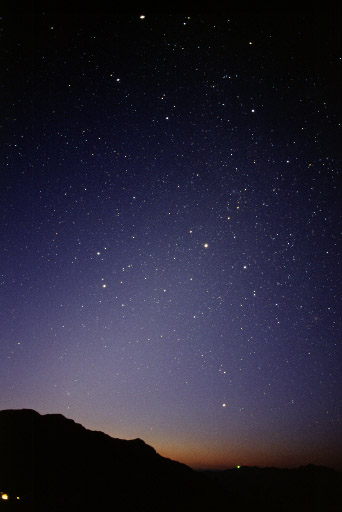
|
| Date: | 27.8.2003 | Time: | morning | Exposure: | 40 s |
|---|---|---|---|---|---|
| Field: | 46o x 65o | Emulsion: | Fuji Provia 400F | Filter: | none |
| Optics: | f=28mm, 1/2.0 | Place: | Emberger Alm, Austria | Observer: | Till Credner |
Not only large bodies like planets or comets are existing in our solar system. Also small dust particles populate the interplanetary space mainly in the plane of our planetary system. These particles are most famous as "shooting stars" or meteors, when they hit our atmosphere. However, the particles are also visible in the interplanetary space as delicate sky glow due to their reflection of sunlight. For northern hemisphere observers this so called zodiacal light can be seen best in autumn just before dawn or at spring time just after dusk (see labels). Another well known appearance of dust particles are cometary tails which are believed to be the main source of the interplanetary dust.